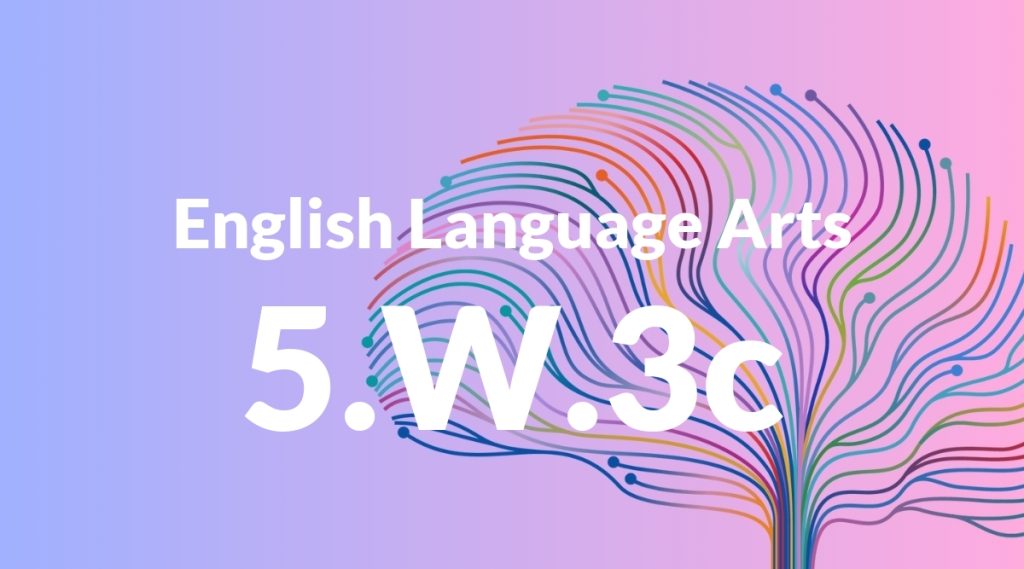Standard: 5.W.3c – Use a variety of transitional words, phrases, and clauses to manage the sequence of events.
Grade level: Grade 5
Subject: English Language Arts
Domain: Writing
Teacher Overview
This standard emphasizes the use of transitional words, phrases, and clauses to manage the sequence of events in writing. Mastery of this skill is crucial for developing coherent and engaging narratives and expository texts. Students should be comfortable with basic sentence structures and understand how simple conjunctions connect ideas.
After mastering this standard, students will be able to write complex and engaging texts with smooth transitions, enhancing the overall coherence and readability of their work.
Common Misconception 1
A common misconception is that transitions are only needed at the beginning of paragraphs. This is incorrect because transitions are essential throughout the text to ensure smooth flow and coherence.
Intervention 1
Use graphic organizers to help students plan where to place transitions within their writing, ensuring they understand the need for transitions throughout the text.
Common Misconception 2
Another misconception is that using the same transitional word repeatedly is sufficient. This approach can make writing monotonous and less engaging.
Intervention 2
Create a word bank of various transitional words and phrases and encourage students to use different ones in their writing to maintain interest and clarity.
Prerequisite Knowledge
Students should have a basic understanding of sentence structure and the use of simple conjunctions to connect ideas.
Subsequent Knowledge
Students will develop the ability to write more complex narratives and expository texts with smooth transitions, enhancing their overall writing coherence and flow.
Instructional Activities
- Have students write a short story using a variety of transitional words and phrases.
- Create a timeline of events from a historical period and write a narrative connecting the events with transitions.
- Develop a procedural text (e.g., a recipe or how-to guide) that includes clear transitional words and phrases.




